A new film from National Geographic opens with the death of a Florida panther on one stretch of the state's thousands of miles of highway—but “Path of the Panther” also ends with a glimmer of hope for an endangered species that once dominated the Southeastern United States.
In the 88 minutes between opening and closing credits, director Eric Bendick follows photographer Carlton Ward Jr. on his quest to use camera traps to capture images of the big cat—in particular, Babs, a female who’s the first to venture north of the Caloosahatchee River river since 1973.
Ward—who grew up in Clearwater—hopes the images will convince policymakers that land in the wildlife corridor is worth more untouched than it ever will be pocked with rooftops or with toll roads running through it.
Along the way Ward’s traps let viewers see other Florida favorites (owl, deer, ibis, racoons, otter, turkey, gator, more) while Bendick introduces us to Indigenous protectors of the land (activist and educator Betty Osceola), Florida cowboys (DeSoto County Commissioner Elton Langford) and veterinarians at ZooTampa who are all interconnected in their effort to preserve wildlands.
He also gives Floridians rare glimpses of the panther up-close-and-personal, plus even rarer footage of Gov. Ron DeSantis not being a douche (the guv is seen near the end of the movie signing the Florida Wildlife Corridor Act in July 2021).
The film, produced in part by Leonardo DiCaprio, is surprisingly emotional thanks to the candor and candidness of Ward, who wears his heart on his sleeve throughout the nearly six years of conservation work captured in this documentary.
National Geographic’s “Path Of the Panther” opens in theaters on Friday, Feb. 24, with both Ward and Bendick landing at the Tampa Theatre on premiere night (and Sunday, Feb. 26) for a post-show Q&A.
Filmmakers behind new ‘Path of the Panther’ documentary host two Q&As at Tampa Theatre this weekend
By Ray Roa on Tue, Feb 21, 2023 at 10:13 am
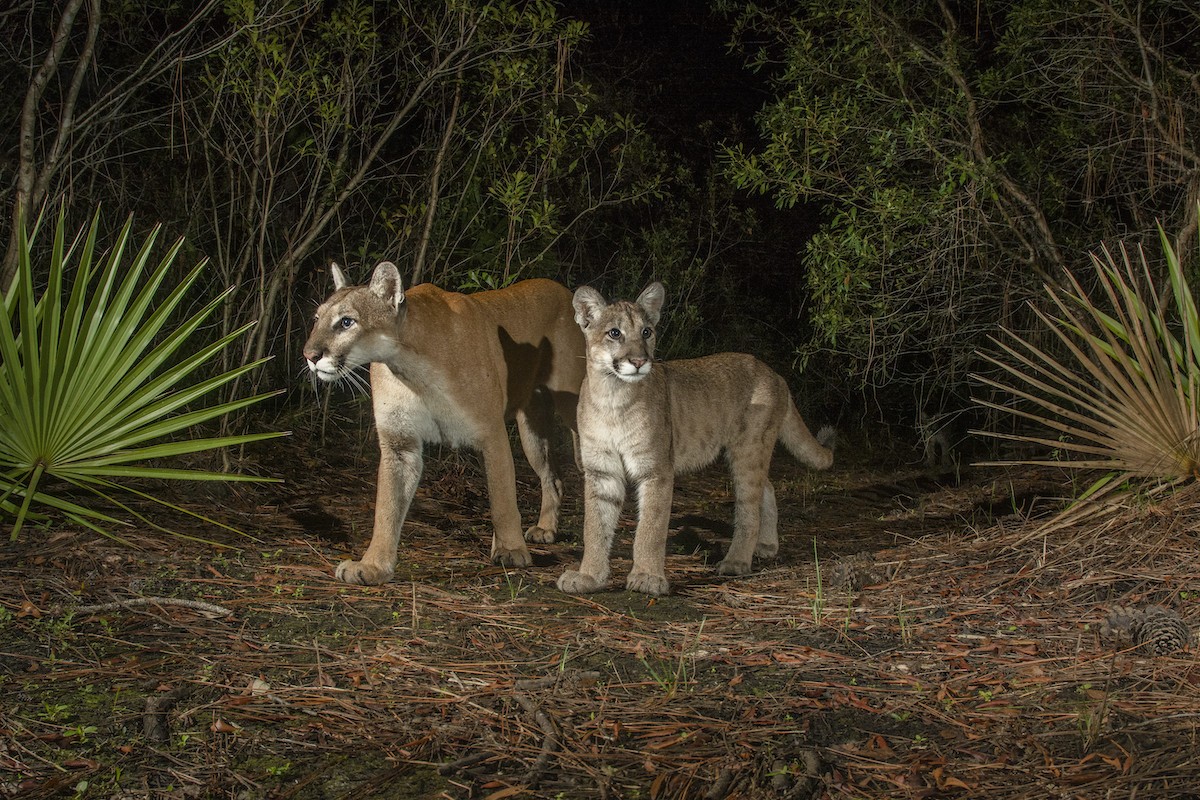
Photo by Carlton Ward Jr.
A Path of the Panther camera trap captured this photo at Babcock Ranch State Preserve, showing "Babs," a female panther, now a mother, standing next to one of her kittens. For photographer Carlton Ward Jr., this moment represents the last best hope for a new generation of panthers to be born north of the Caloosahatchee River and to one day reclaim their historic range.
Scroll down to view images
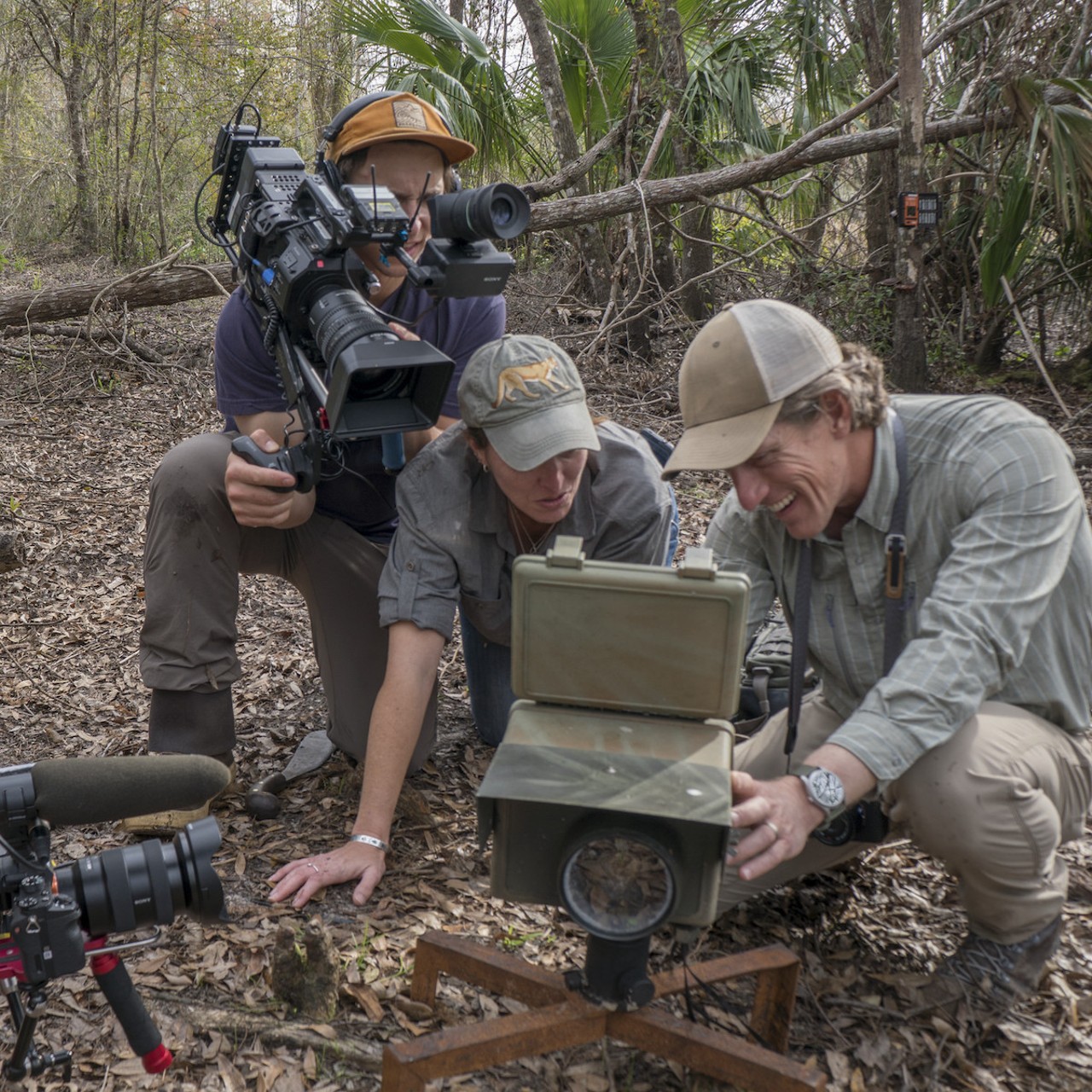
Photo by Carlton Ward Jr.
Carlton Ward Jr. and Dr. Jen Korn discover the first photos of panther kittens North of the Caloosahatchee River in nearly fifty years as cinematographers Danny Schmidt and Eric Bendick capture the moment. Moments like this one left an indelible mark on the teams from Grizzly Creek Films and Wildpath who dedicated over five years to the making of Path of the Panther.

Photo by Carlton Ward Jr.
A male Florida panther leaps over Carlton Ward Jr.'s 'logjump' camera trap site as he patrols territory in the Florida Panther National Wildlife Refuge. The cowlick on his back is a vestige from recent history when the panther population was fewer than 20 animals and suffering from inbreeding. A vision of strength and power, this panther reflects the success of conservation measures designed to bring the species back from near extinction within their core range where panthers have survived for thousands of years.
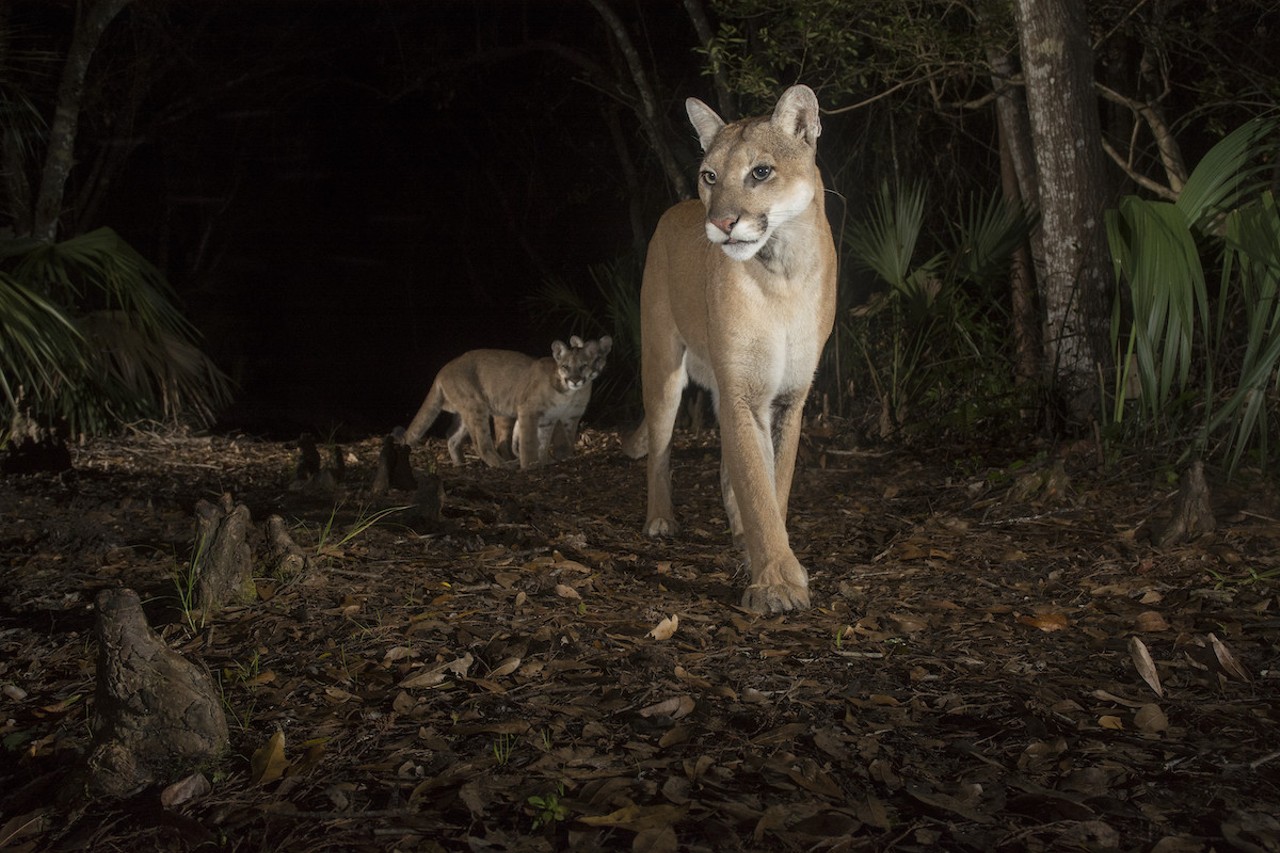
Photo by Carlton Ward Jr.
Trailed by her two cubs, "Babs" strides through a forested trail on Babcock Ranch State Preserve east of Fort Myers. She is the first female panther documented north of the Caloosahatchee River since 1973. By reclaiming historic panther territory north of the Everglades for the first time in nearly five decades, this pioneering panther and her offspring represent new hope for the recovery of her species.
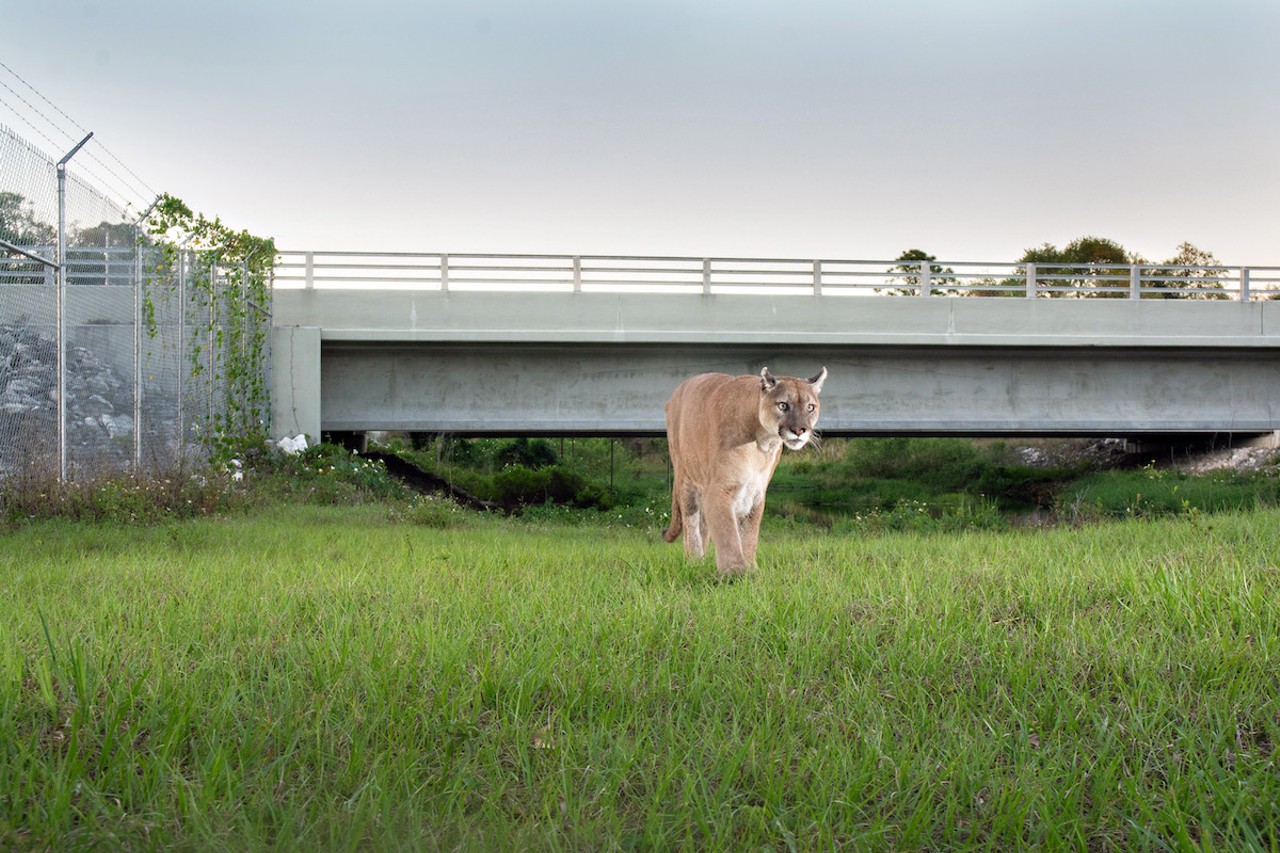
Photo by Carlton Ward Jr.
A male Florida panther travels beneath a wildlife underpass to avoid traffic on State Road 80 near LaBelle, Florida. Panthers once roamed throughout the connected habitat across the entire southeastern United States. Now, only a small population, the last pumas east of the Mississippi river, survives in the fragmented Florida landscape. Road crossings are the leading cause of mortality for panthers. Underpasses like this one and an innovative movement to protect wildlife corridors represent the last best hope for survival of the species.
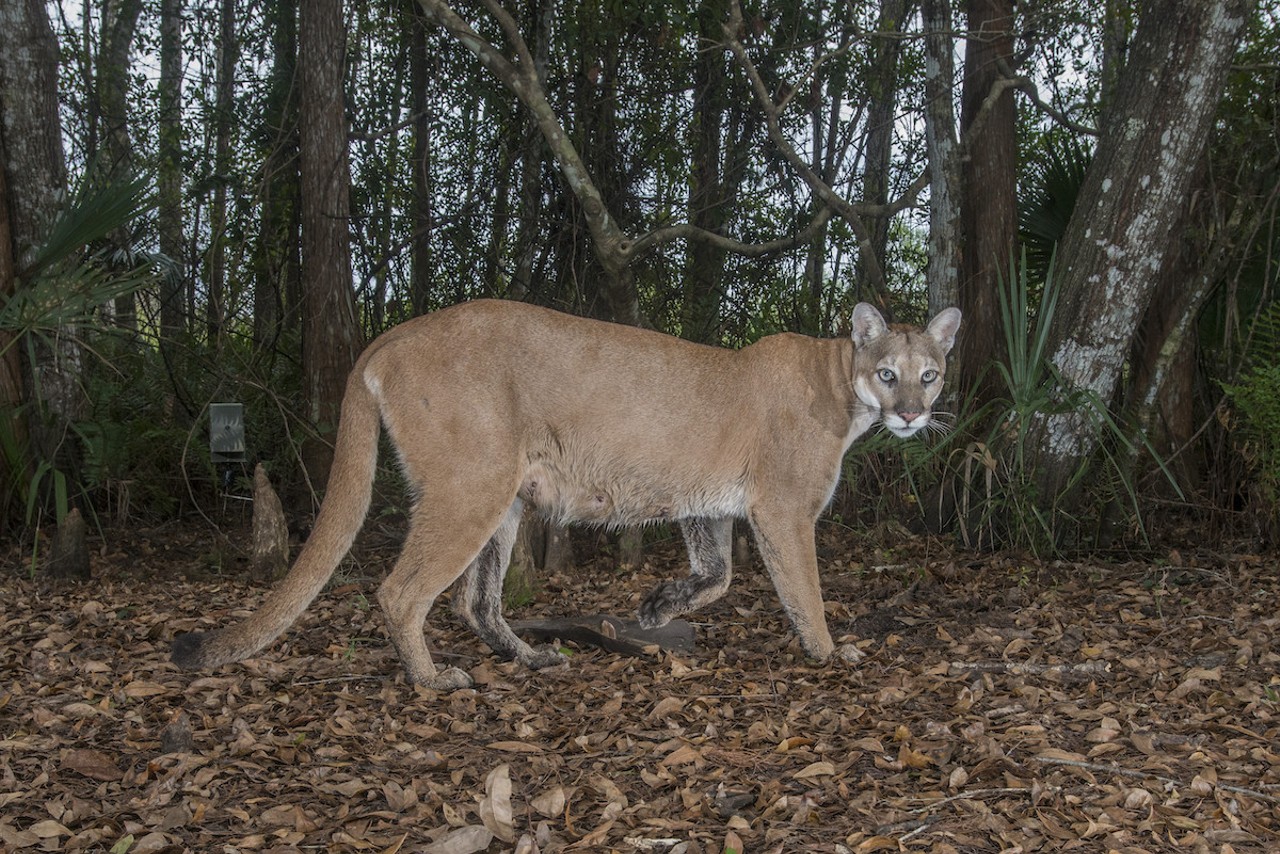
Photo by Carlton Ward Jr.
Triggering a camera trap on Babcock Ranch State Preserve, this panther, nicknamed "Babs," is the first female Florida panther documented north of the Caloosahatchee River since 1973. The ability to reestablish a breeding population farther north is vital to the recovery of the species.
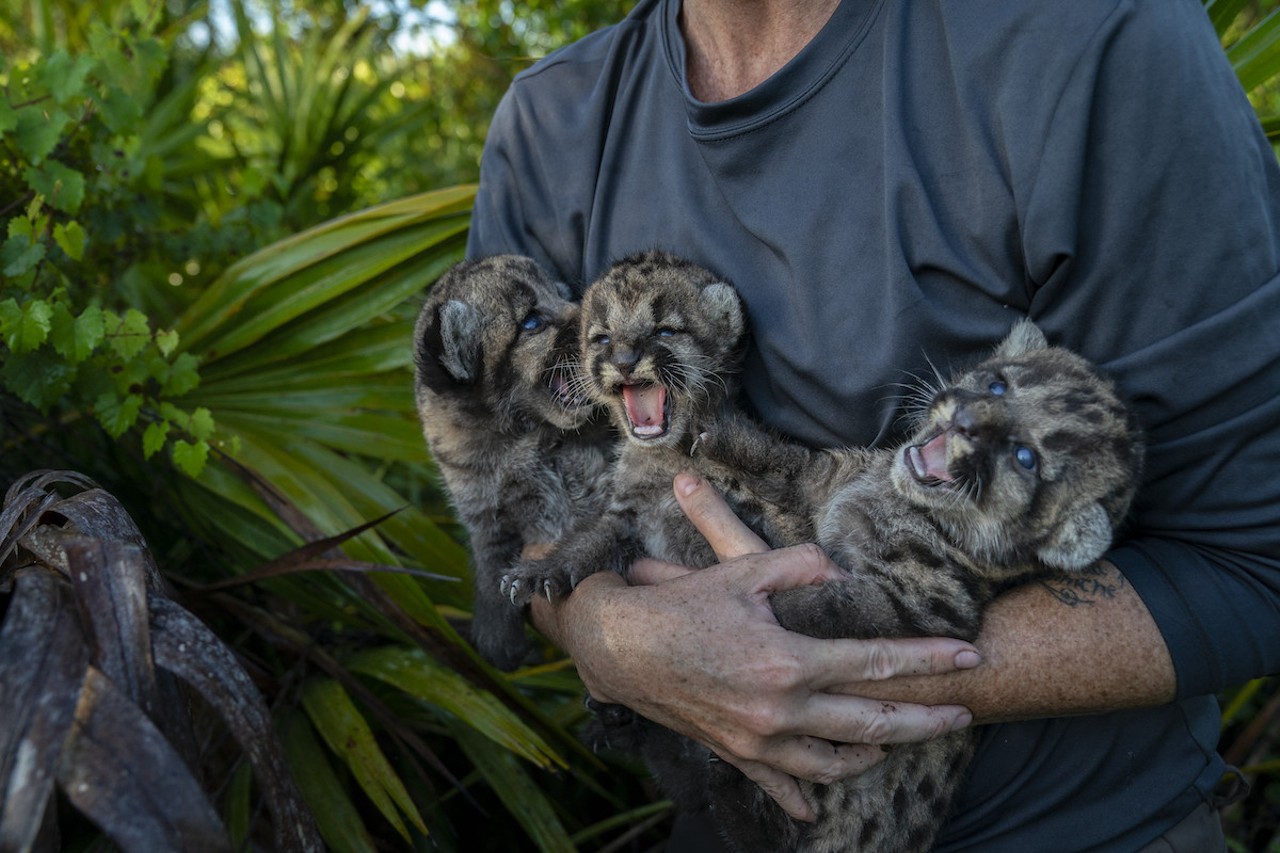
Photo by Carlton Ward Jr.
During a den survey of a Florida panther, veterinarian Dr. Lara Cusack assesses the health of three wild kittens. The survival of kittens is one of the most critical factors for the long-term survival of the species.
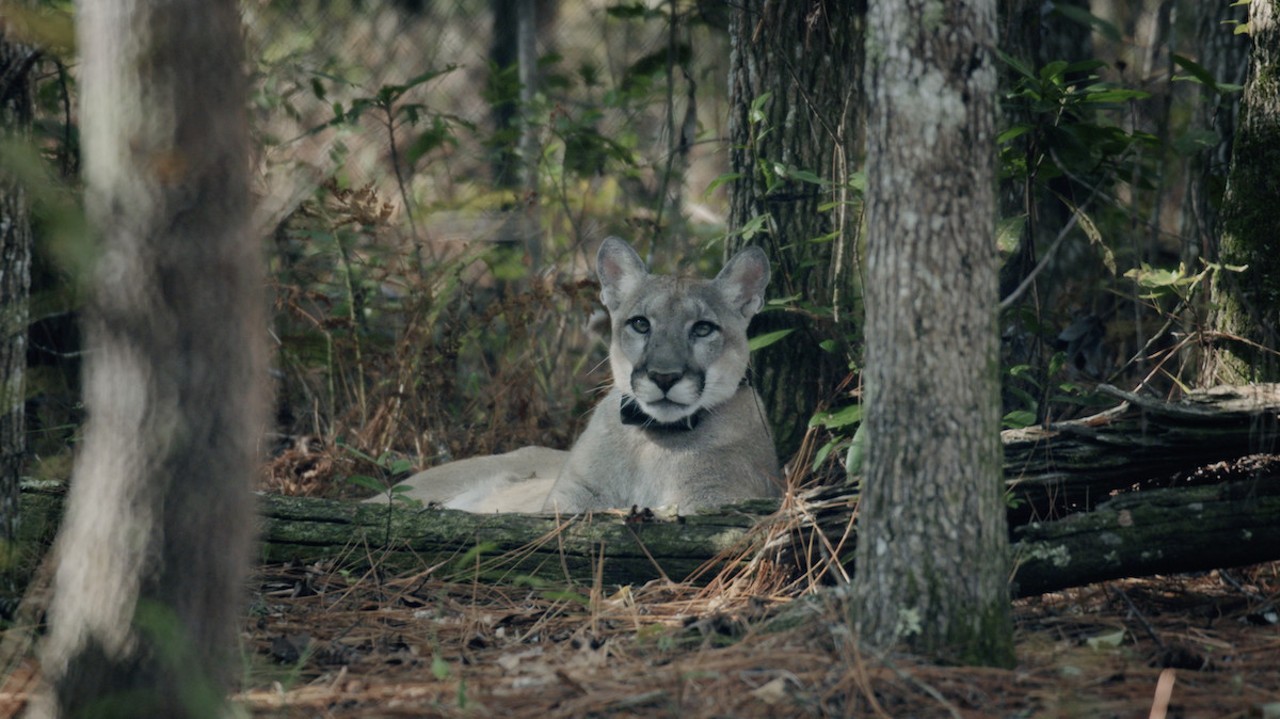
Photo by Carlton Ward Jr.
This panther, FP250, was nicknamed "Tres" for his three broken legs sustained in a vehicle collision. Miraculously, Tres was surgically repaired and his 'fighter spirit' enabled him to be rehabilitated for release back into the wild. Faced with the choice of surgical repair or euthanasia for injured panthers, the unwavering commitment of the Florida Panther Recovery team has been instrumental to the recovery of the species.
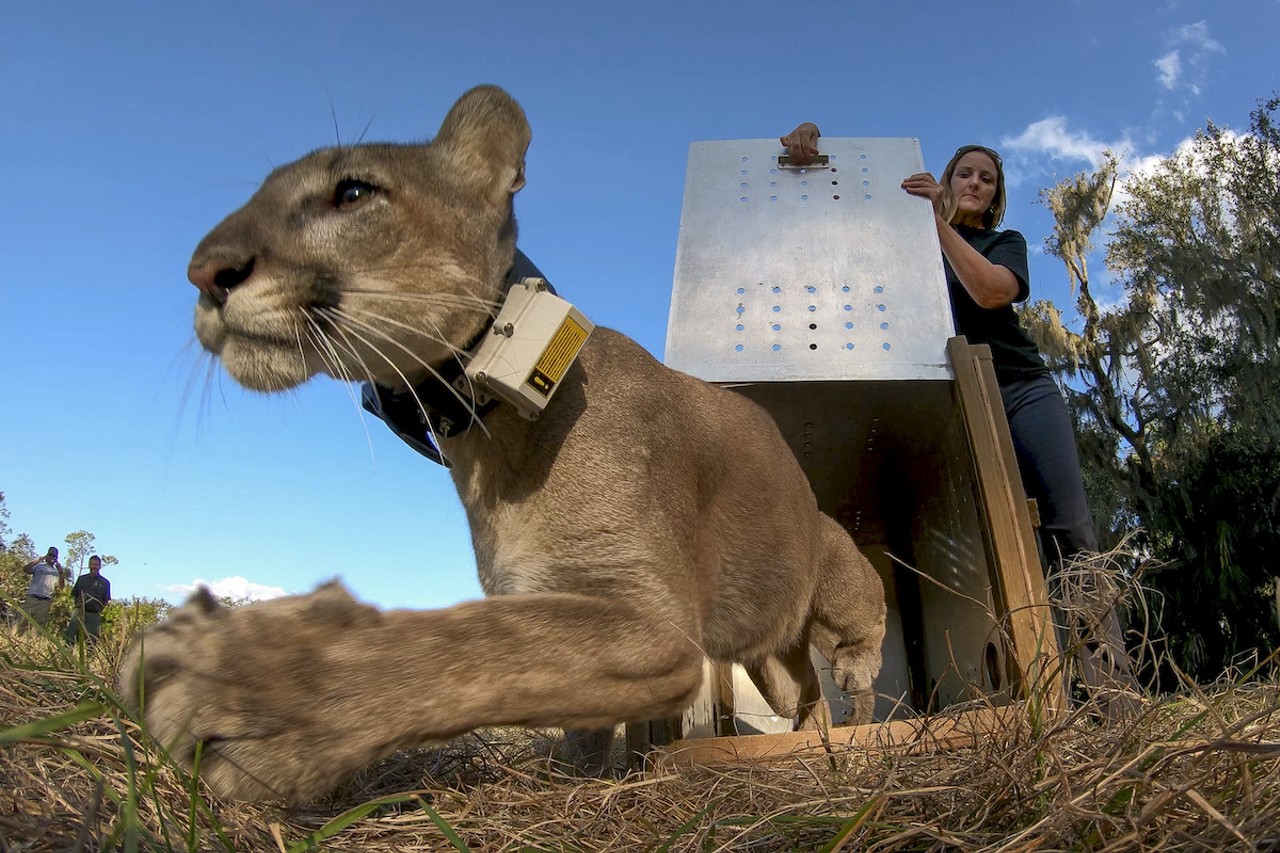
Photo by Carlton Ward Jr.
"Tres," a male Florida panther nicknamed for his three broken legs, is released back into the wild after many months of rehabilitation. Now, the challenges of life in the wild begin.
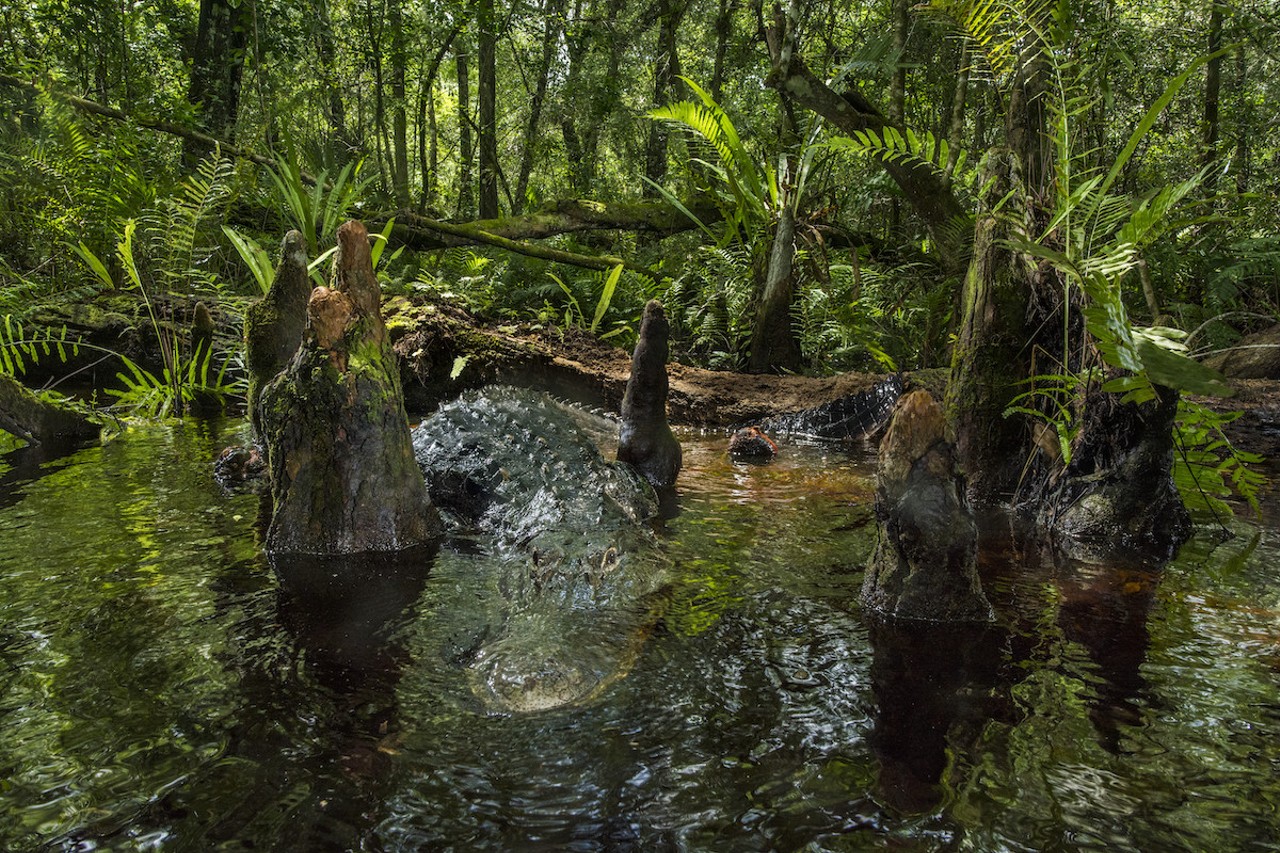
Photo by Carlton Ward Jr.
Caught on a camera trap where panthers prowl during the dry season, an American alligator winds between cypress knees—distinctive outgrowths above the roots of the tree—in the northern reaches of the Fakahatchee Strand. The Florida panthers' ability to survive in South Florida swamps, away from the habitat destruction and hunting of the past century, is a main reason they persevere as the last remaining population of pumas in the eastern United States.
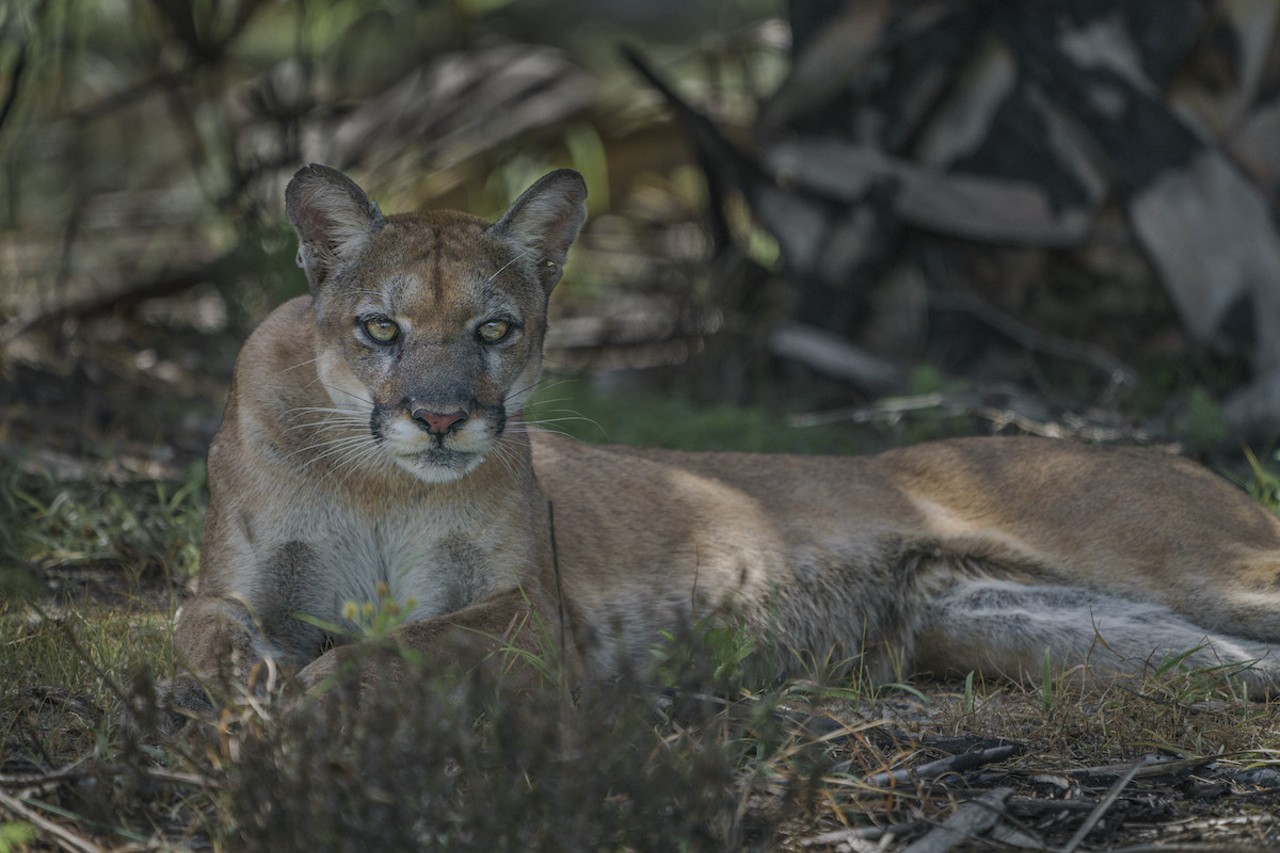
Photo by Carlton Ward Jr.
Carlton Ward Jr. took this photo of a Florida panther—the only time he had a camera in hand when seeing one in the wild—while heading into the backcountry to monitor a camera trap site. After years of consistent effort, this stroke of luck finally made all the blood, sweat, and tears worth it for an unforgettable moment of "staring into the wild eyes of a Florida panther."
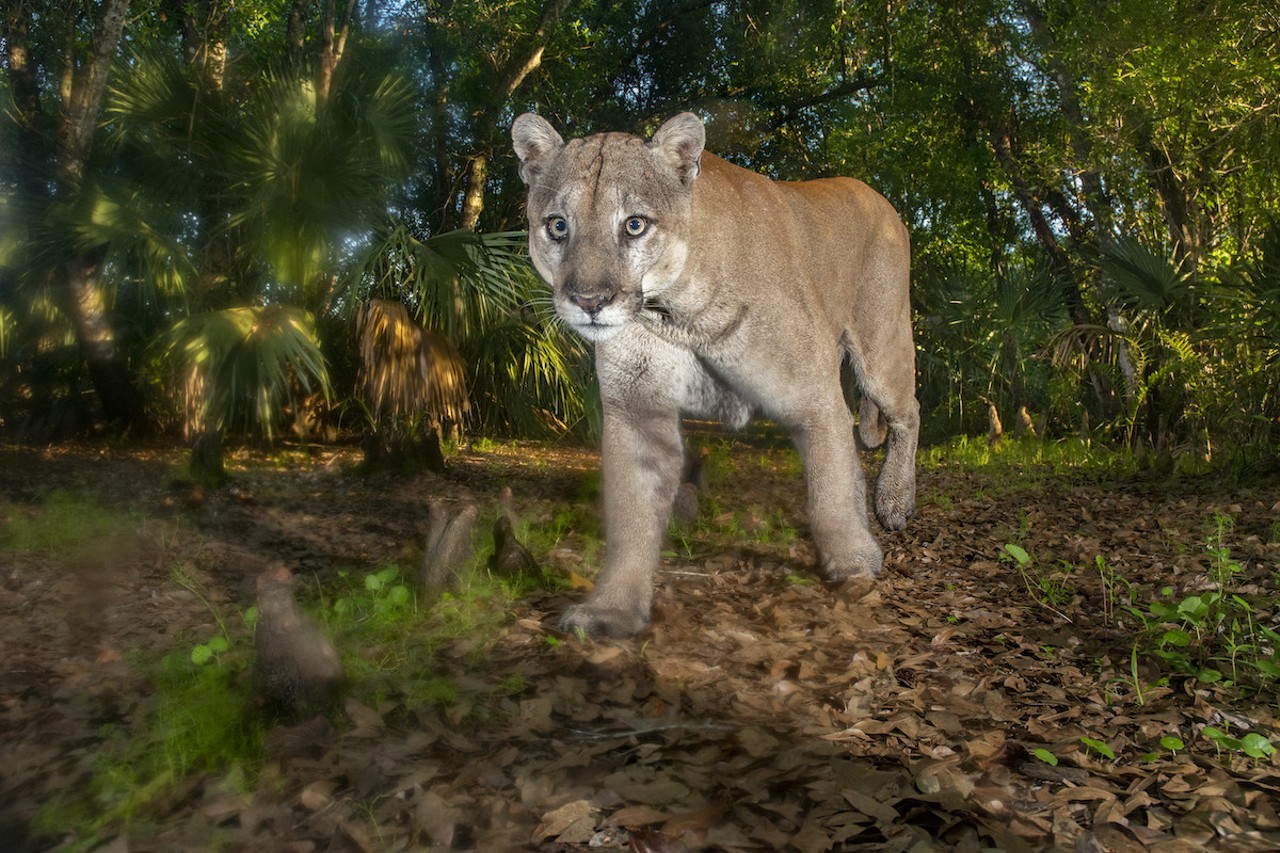
Photo by Carlton Ward Jr.
A mature male panther triggers a camera in early morning light at Babcock Ranch State Preserve. Distinguished by his square head and J-shaped tail, he was the only male documented by this camera in the territory where the first female had been seen.
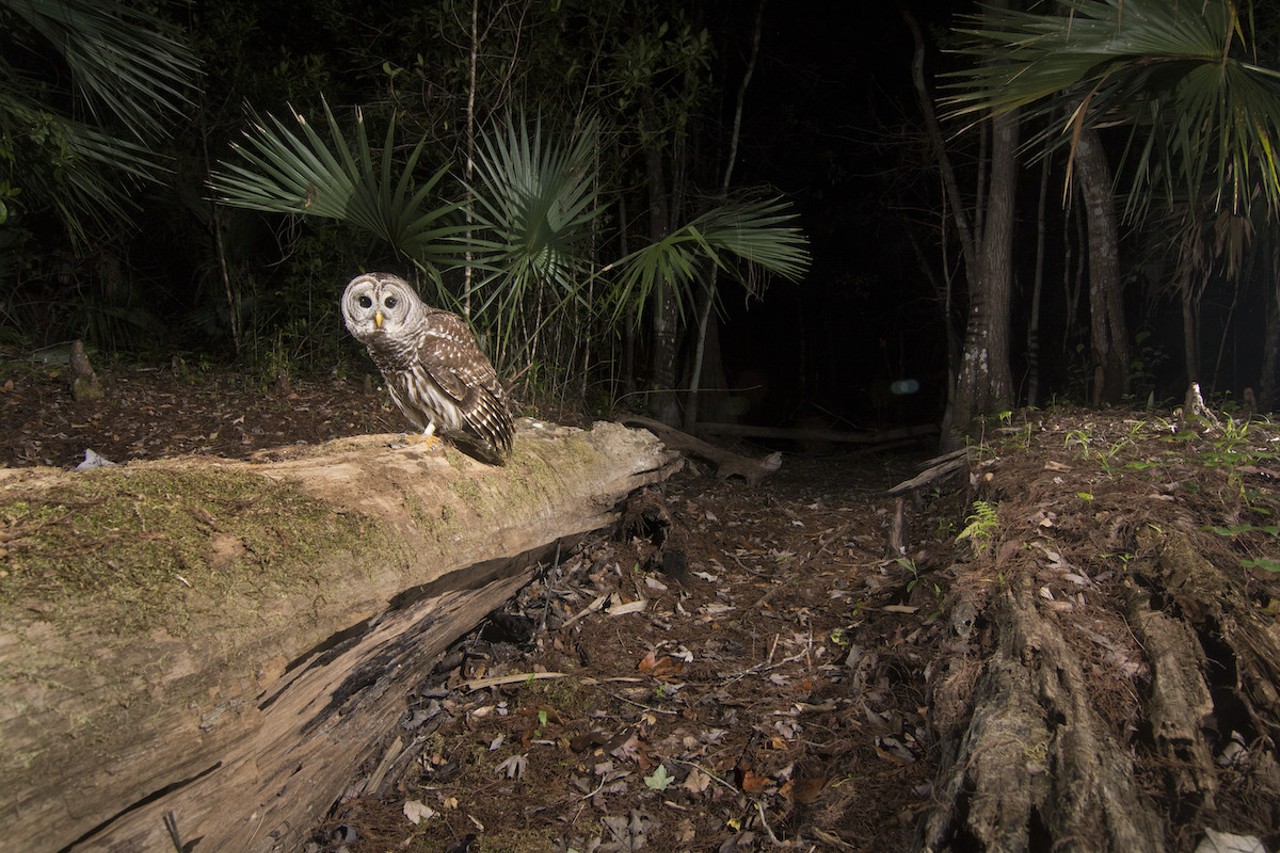
Photo by Carlton Ward Jr.
A barred owl rests on the "logjump" camera trap site. The captures of other wildlife that frequented these sites reveals the incredible web of biodiversity that exists in panther habitat. As the saying goes, "protecting the large home range of a single Florida panther also results in the protection of countless other species."
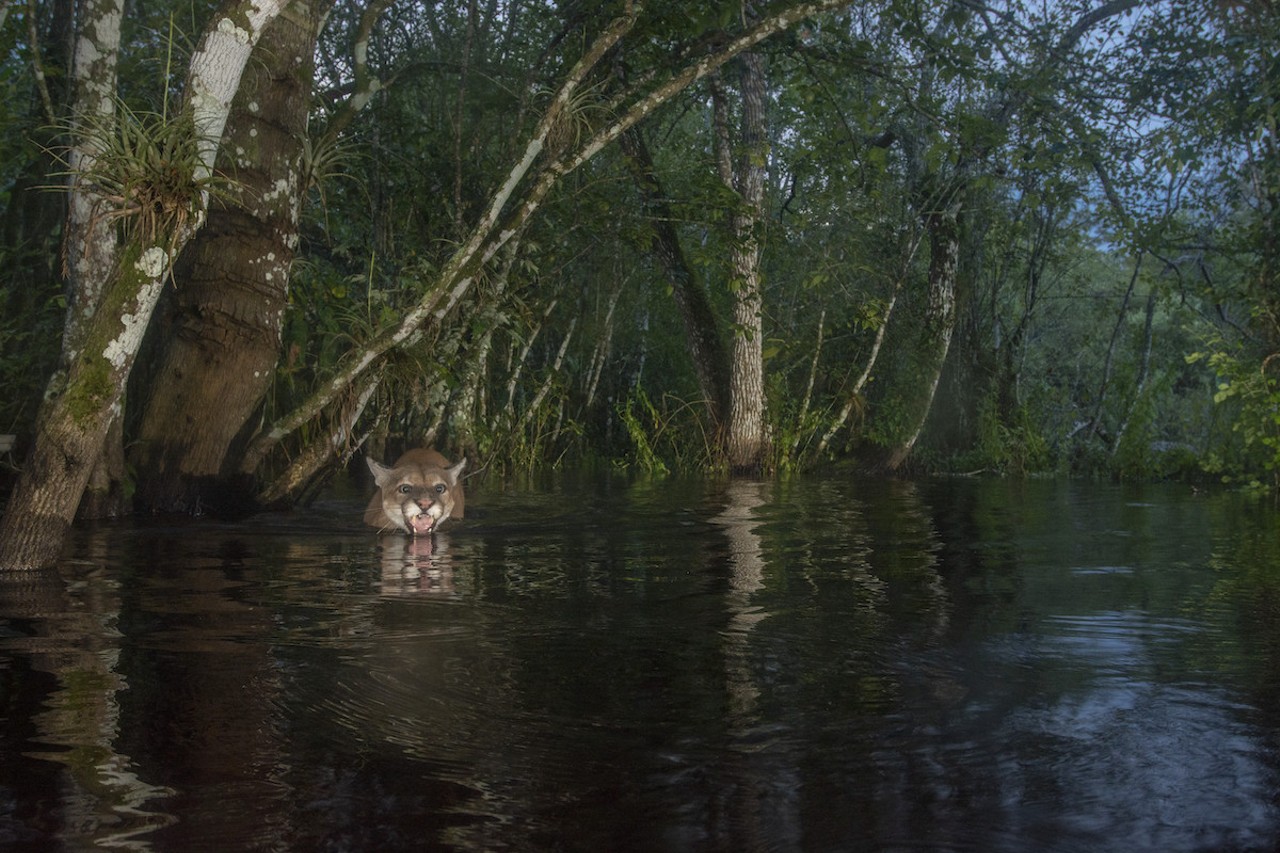
Photo by Carlton Ward Jr.
Chin-deep in water, a male Florida panther wades through a flooded section of a trail in the Fakahatchee Strand within Florida Panther National Wildlife Refuge. Cats may not like water, but the panther's ability to live in South Florida's subtropical swamps, far from conflict with people, allowed the species to survive during the past century.
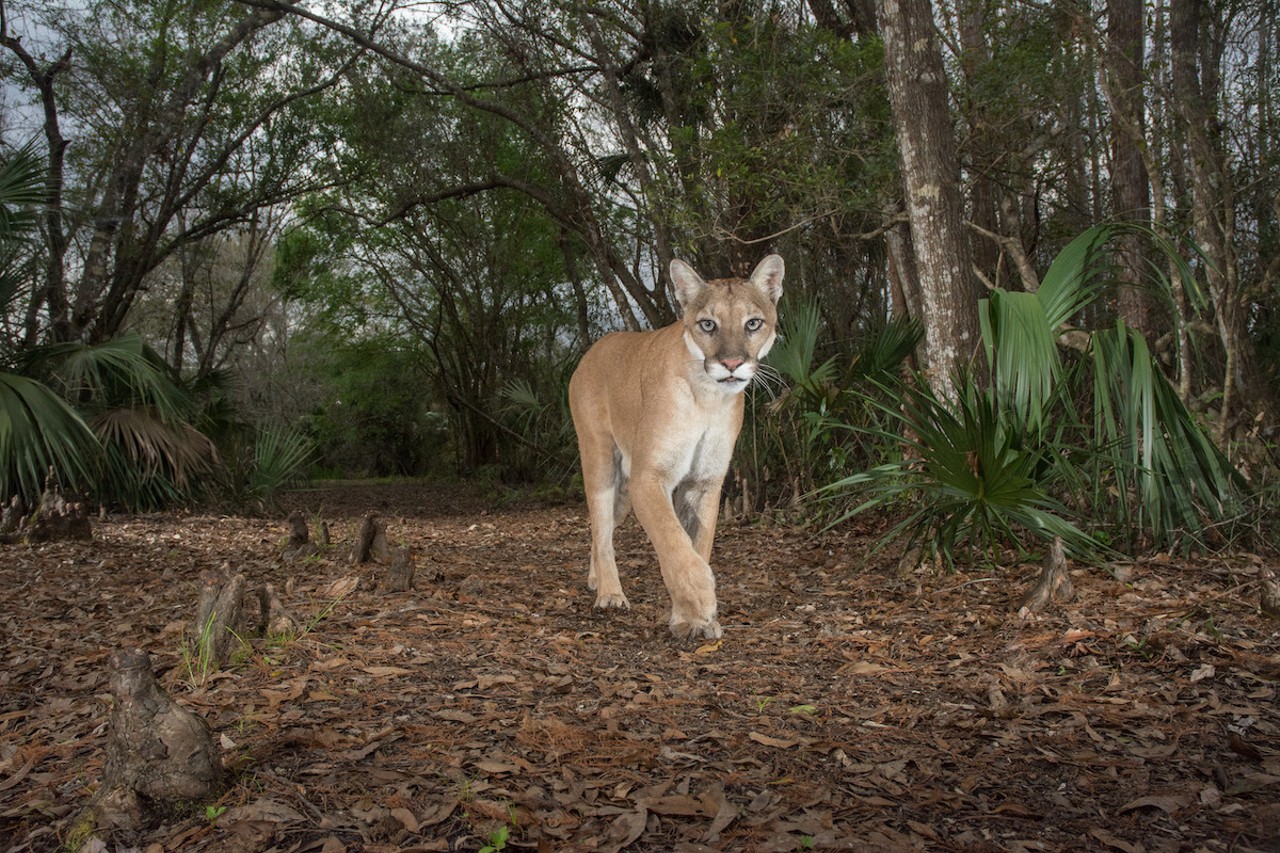
Photo by Carlton Ward Jr.
Triggering a camera trap on Babcock Ranch State Preserve, this panther, nicknamed "Babs," is the first female Florida panther documented north of the Caloosahatchee River since 1973. The ability to reestablish a breeding population farther north is vital to the recovery of the species.
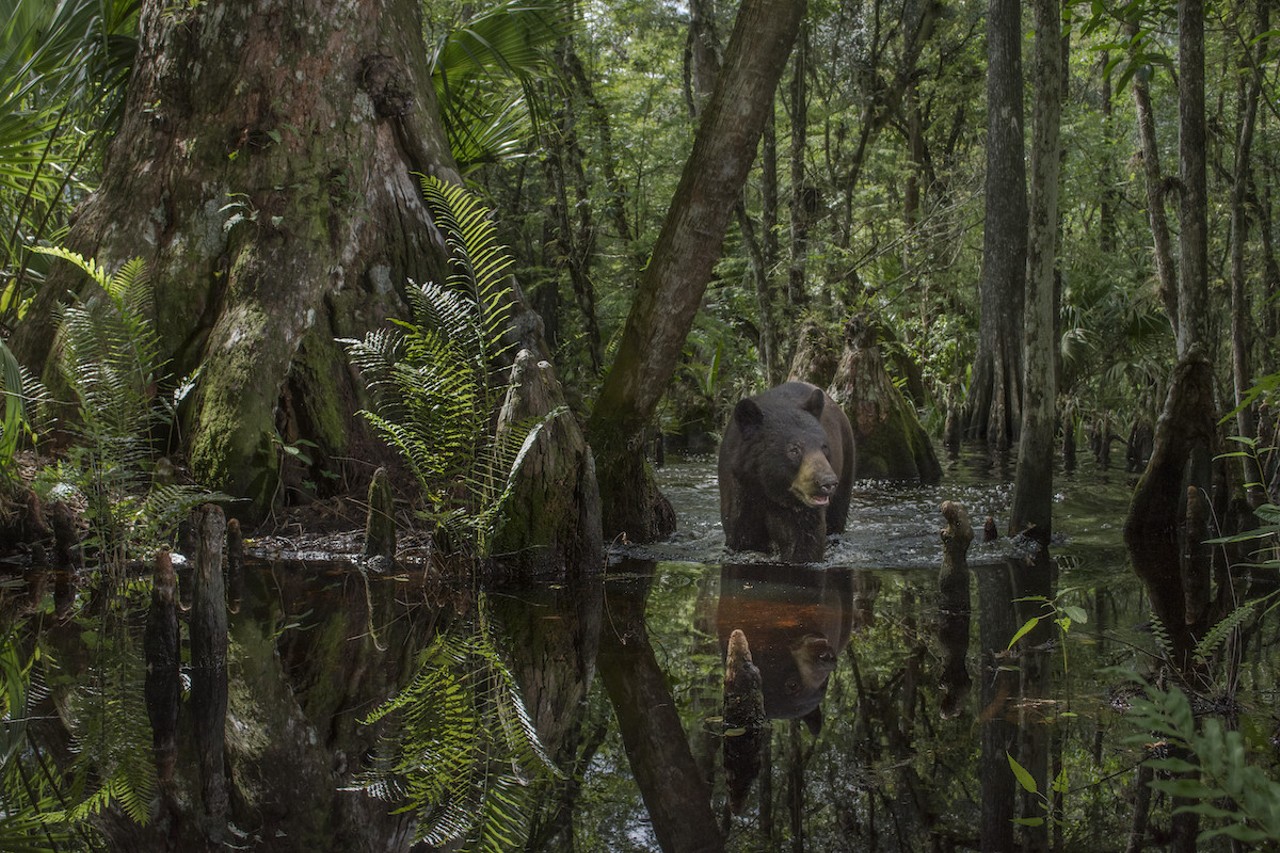
Photo by Carlton Ward Jr.
A camera trap on Green Glades West Ranch, adjacent to Big Cypress National Preserve, shows the transition from wet season to dry season at the base of a 500-year-old cypress tree. Like panthers, Florida black bears have vast home ranges and depend on a network of connected habitats to survive.

Photo by Carlton Ward Jr.
Suburban development outside Orlando, Florida reveals the increasing fragmentation in former panther habitat. As large landscapes are broken into smaller pieces, these fragments are a one-way path to extinction for a wide-ranging terrestrial mammal like the Florida panther.
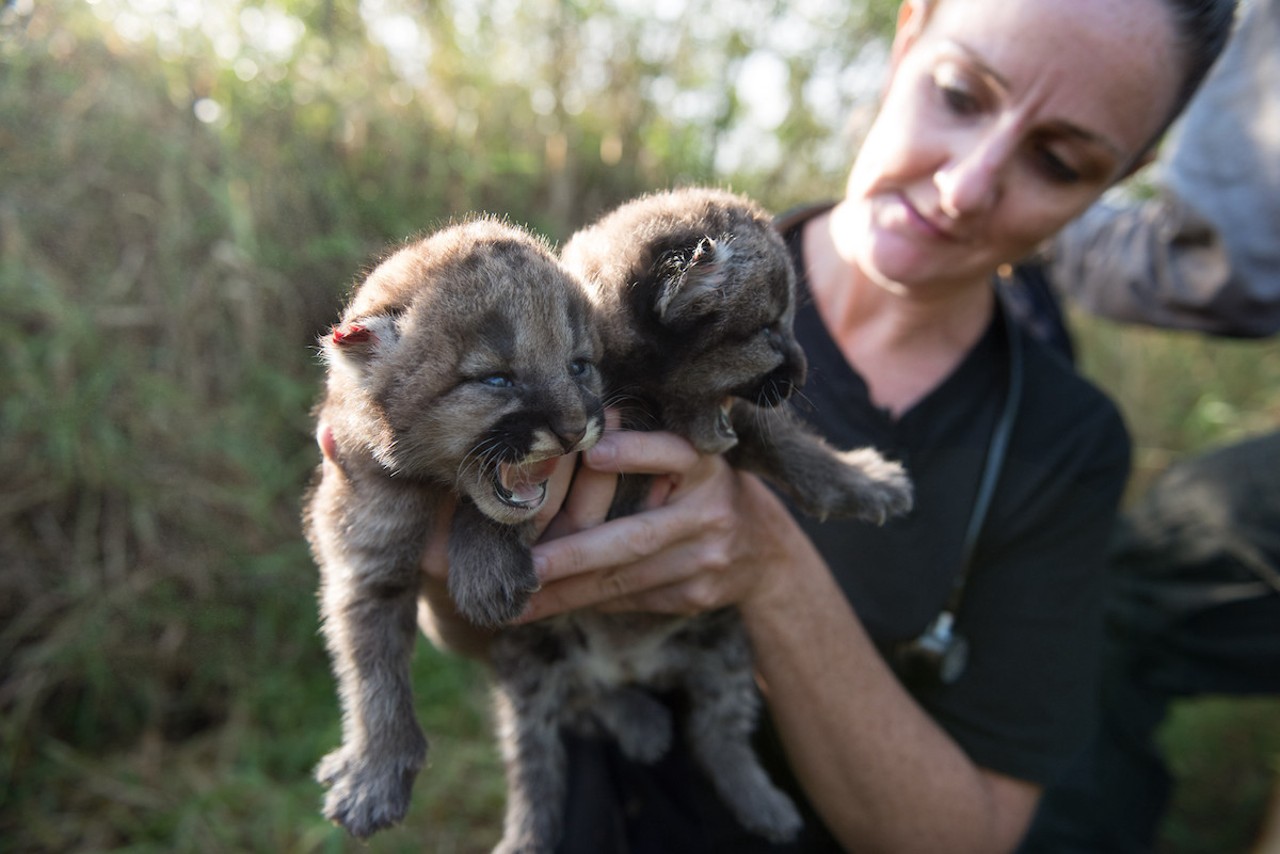
Photo by Carlton Ward Jr.
During a den survey of a Florida panther, veterinarian Dr. Lara Cusack assesses the health of three wild kittens. The survival of kittens is one of the most critical factors for the long-term survival of the species.

Photo by Carlton Ward Jr.
Pumas are the widest-ranging terrestrials’ mammals on Earth. However, the Florida panther faces increasingly long odds for survival as its once vast habitat is now rapidly developing into a divided landscape bordered by suburbs, highways, and other barriers. Wildlife corridors offer the last best hope for panthers to connect the last protected areas in order to stitch to together a functional home range.
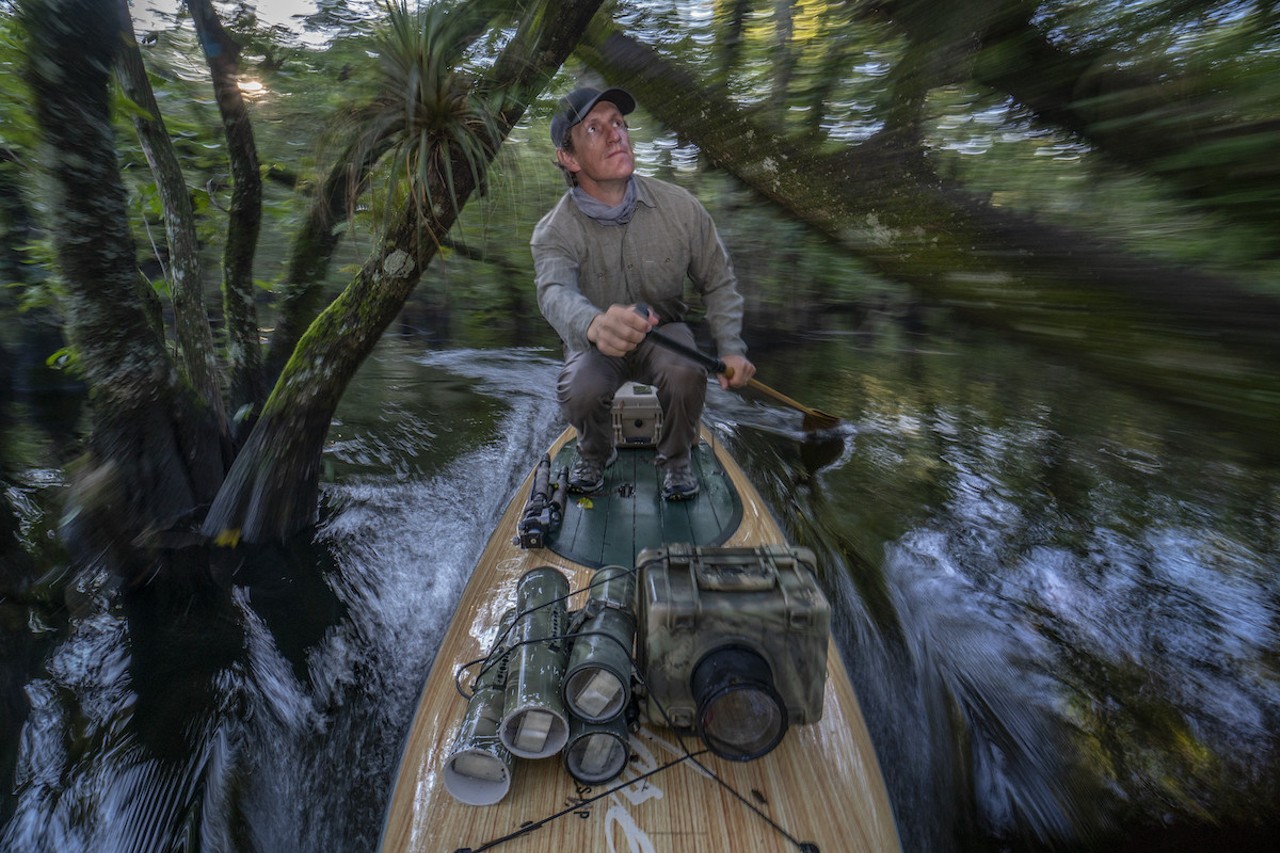
Photo by Carlton Ward Jr.
National Geographic Explorer and photographer Carlton Ward Jr. has spent almost two decades advocating for the Florida Wildlife Corridor, a network of public and private lands that can provide a lifeline for the panther. Through his 'Path of the Panther' project, Carlton set out to document the Florida panther as it had never been seen before. His work illuminates the secret lives they lead, the multi-faceted threats they face, and the innovative solutions that conservationists have initiated to help them survive.
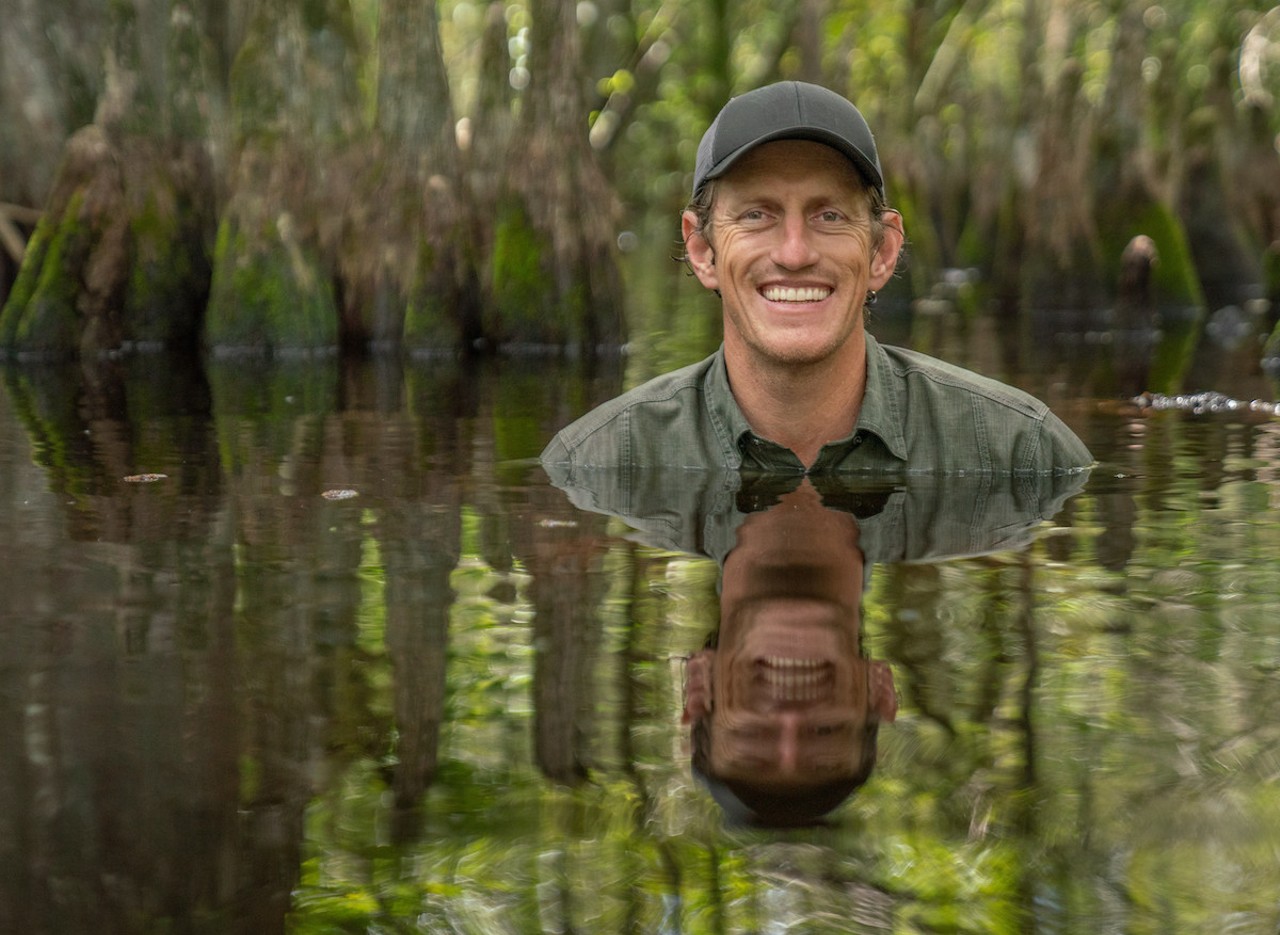
Photo by Carlton Ward Jr.
National Geographic Explorer and photographer Carlton Ward Jr. has spent almost two decades advocating for the Florida Wildlife Corridor, a network of public and private lands that can provide a lifeline for the panther. Through his 'Path of the Panther' project, Carlton set out to document the Florida panther as it had never been seen before. His work illuminates the secret lives they lead, the multi-faceted threats they face, and the innovative solutions that conservationists have initiated to help them survive.
Page 1 of 2







